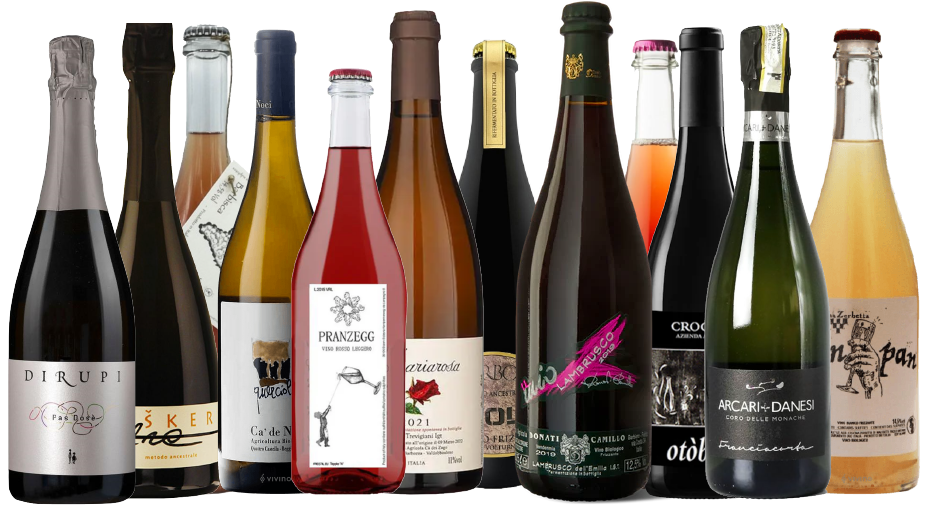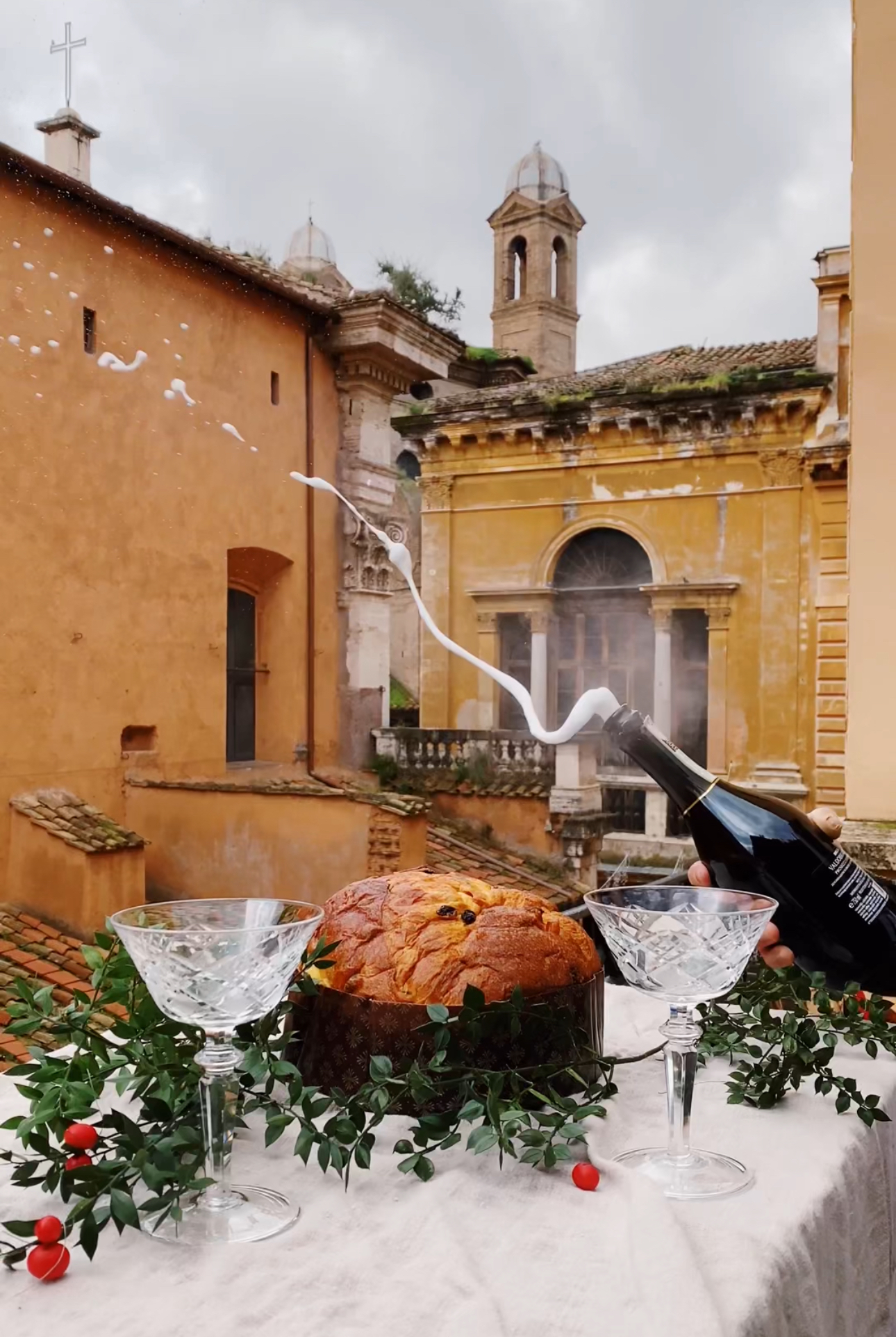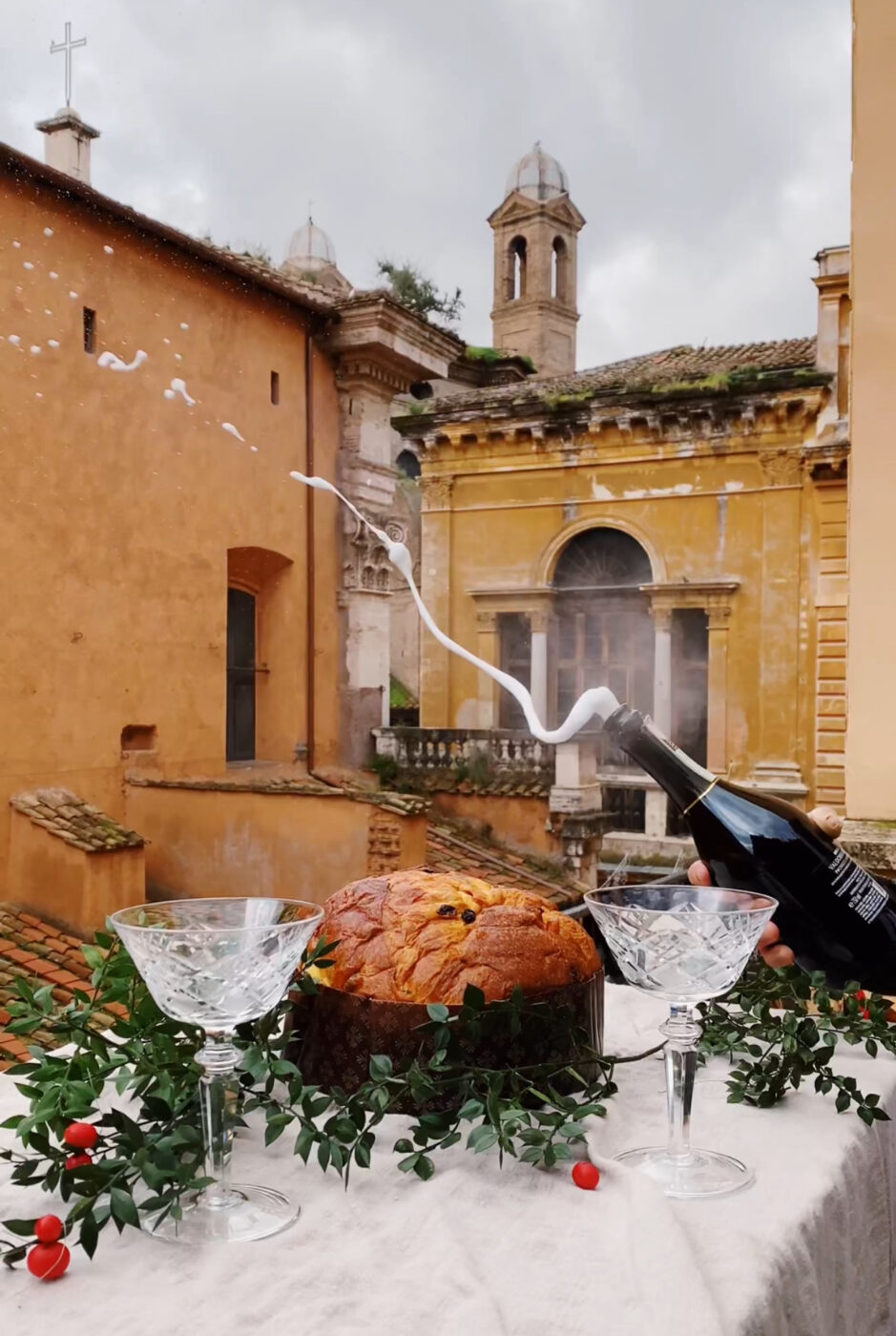The festivities this season brings can only be accompanied by one sound alone: that of a popping cork. But before you reach for that prosecco or opt for the Champagne, pause for a second. Limiting yourself to these bollicine (sparkling wines) is a bit like thinking that spaghetti is the only type of pasta.
There’s a bubbly array of bollicine made across the length of Italy that demands you go beyond the obvious. Of course, prosecco is the natural answer, as is Franciacorta, when the occasion calls for it, but beyond those there is a multitude of options that reflect the diversity of Italy’s grapes and winemaking traditions. A pet-nat from Barbaresco? Or an elegant “traditional method” (or “metodo champenoise”) from Campania made from the rare Aspirinio grape? And what about pure fun in the form of Lambrusco? All that can be said is that there’s no reason to stick to the tried and tested bollicine when there is infinite variety to be had.
Not only does bringing something new to the (festive) table guarantee kudos all around, it also means that bollicine can accompany the entirety of the celebration, from La Vigilia to New Year’s brunch; something that no-one has ever complained about. So without further ado, and much like the countdown to Christmas Eve, here are 12 lesser-known Italian bottles of bollicine you should have on your wishlist.
For the uninitiated, a very brief primer on bollicine. Literally meaning “with bubbles”, it can encompass a wide variety of methods used to put the “sparkle” in wine. The differences are in the fermentation processes. Metodo classico (traditional method) encompasses one fermentation in tank and another in bottle, charmat (used for prosecco and lambrusco) is where two fermentations take place in steel tank, and pet-nat (or metodo ancestrale) is when spontaneous fermentation takes place inside the bottle.

Mariarosa, Ca’ dei Zago
Prosecco, but not as you know it. Also a perfect breakfast wine if that’s your vibe (and if not, then why not? It’s Christmas, after all). This is made by the historic col fondo method that means overly sweet prosecco is actually a thing of the future rather than of the past. Col fondo, leaving the lees in the wine and not adding sugar, is how prosecco was traditionally made. This method creates a slightly cloudy sparkling wine with a savory note. There are a few producers across the area making prosecco this way, but I have to rank this among my favorites. The small, family-run winery is unassuming, yet excellent, using biodynamic methods across its six hectares of vineyards. The Mariarosa is recognised as their finest plot, with vines over 40 years old all tended by hand.
Glera 18/10 Metodo Ancestrale, Skerk
If your love for orange wine is equal to mine, then look no further. Sandi Skerk is based in Friuli, where he is renowned for his deep orange wines that have an intoxicating salinity; his take on prosecco is no less magnetic. His reasons for making a wine from grapes harvested from Valdobbiadene remain unanswered (and trust me, I have tried). Then again, Sandi Skerk is no ordinary winemaker but a humble man who eschews self-promotion and instead is committed to making exceptional natural wines. The grapes are macerated for two weeks and then aged on lees, resulting in an intense wine with candied citrus and honey in the mouth. A showstopper.
Querciole, Ca de Noci
It’s not a far push to say that Ca de Noci succeeded in rescuing Lambrusco from a universe of sickly sweet, heavy wines, focusing instead on small production and indigenous grapes such as Spergola that were in danger of fading into obscurity. This vineyard is run by two charming brothers, Alberto and Giovanni, whose enthusiasm infuses through their wines. Their Querciole is a beautiful golden hue in the glass with a subtle perlage and notes of candied orange and spice. Pair this with aged Parmigiano Reggiano and maybe a drop or two of 15-year old aceto balsamcio, and life really can’t get any better.
Coro delle Monache Blanc des Noirs, Arcari + Danesi
Franciacorta needs little introduction as the Italian equivalent to Champagne. Though Franciacorta has nothing to do with France, this is the wine you turn to when you are feeling flush. There are various revered producers such as Bellavista and Ca’ del Bosco, but my money is on Arcari + Danesi. Set within a 10 hectare biosphere to the south of the Franciacorta appellation, their USP is the Solo Uva method in which grape juice reserved from the previous harvest is added for dosage rather than sugar. The resulting wines are strikingly elegant, with the current release of their Coro delle Monache Blanc des Noirs 2015 being the crowning glory. A wine you save for an intimate evening, especially if you want to impress the family.
Miau!! Pranzegg
If there was one wine best suited for a celebratory brunch, it’s this. Like lemon and raspberry sherbet, it goes down a treat and seems to revive the senses almost mystically. The bottle is the work of Martin Gojer, whose vineyards in the heart of the Alto Adige are forerunners in natural methods. The Miau!! is made from Lagrein–a red grape traditionally used to make the silky wines for which this area is so renowned–fermented here in the ancestral method. The result is a gentle frizzante begging to be paired with smoked salmon, eggs, and (why not) caviar.
Barbisca, Fabio Gea
Now time for something different. At the hands of the effusive Fabio Gea, Barbera takes on a completely new character. In the way that only a true eccentric could, Fabio decided to start making a lively sparkling wine in an area historically dedicated to full-bodied red wines–prime Barbaresco territory. Taking this one step further, he ages Barbera grapes harvested from a single hectare in glass jars (demijohns) and porcelain jars that he makes himself. The result is a playful wine that defies expectations and hits the spot when the party is just starting to take off.
Rivolta, I Borboni
Think of Campanian wines and you’re most likely to consider a crisp Falanghina or a full-throttle Aglianico. Within the region though, there is a striking diversity of winemaking traditions, such as in the little appellation of Aversa. Here the local grape of Asprinio is used to create an ancestral method sparkler that is characterized by fine perlage and a slightly nutty note. Serve this up with slow cooked fish or maybe even spaghetti alle vongole for a mouthwatering pairing.
Lambrusco, Camillo Donati
One of the leading lights of Italy’s natural wine scene, Camillo Donati creates wines that epitomize the traditions of Emilia Romagna. I first had this wine en route from visiting the vineyard near Parma back to Bologna (don’t worry, I wasn’t the driver), and I have never looked back. Their Lambrusco is made from the subvariety known as Lambrusco Maestri: traditionally used for the cloying Lambrusco we remember from our childhoods, this is a bone-dry, refreshing example. Crowned with a captivating purple froth in the glass, it’s refermented in bottle entirely without chemicals. The beautifully perfumed wine finally gives Lambrusco a good name.
Otobor, Crocizia
When you’re looking for a characterful wine that will be a conversation point for a dinner with close friends on your wavelength, this is the one. Here is the primer (take note). Taking over an abandoned estate is no mean feat, but Crocizia has done it with aplomb. The heart of Emilia Romagna is the setting for a vineyard that is set into woodlands, where cultivating vines is a mission as much as a passion. Barbera grapes are used to create an idiosyncratic pet-nat; a playful wine with a notable freshness and minerality, with the late harvest in October giving rise to its name.
Pas Dose, Dirupi
Heroic winemaking is the term used for wines from the Valtellina, a tiny area in the northernmost reaches of Lombardy. In this valley, the energy of the Dirupi duo reverberates; trust me, their energy and laughter is infectious. That aside, they also craft some incredible wines focusing on the indigenous grape of Chiavennasca (a local clone of Nebbiolo). Though normally used for red wines, it’s here employed for a delicate sparkling. A brief skin maceration and 18 months of lees aging results in a rosé-hued beauty with a fine perlage and an enduring depth on the tongue.
Rose and the Beast, Valli Unite
A pet-nat belter from co-operative icons Valli Unite. This communal collective was established in the 1970s and ever since has committed their energies to a varied and rich biodiversity. Local grapes of Barbera, Dolcetto, and Malvasia, amongst others, are used to make this rosé frizzante. All grapes are co-fermented in stainless steel with a minimal addition of sugar. Think strawberries and lemonade, and you are there.
ShanPan, Cascina Zerbetta
Cascina Zerbetta is a one-man pursuit helmed by the intensely thoughtful Paolo Malfatti. Located near Asti, in the heart of Piedmont, his main focus is Barbera, but he’s also recognised that Sauvignon Blanc is well suited to the area. For such ends, he creates the playful ShanPan that makes use of late-ripened grapes, added to the base wine to create the fizz. While Champagne it may not be, ShanPan is the wine you reach for when you need some hair of the dog.
––––––––
So here’s raising a glass to the many corks and crown caps that will be popping this festive season, and to the promise that bollicine now means more than just prosecco.

